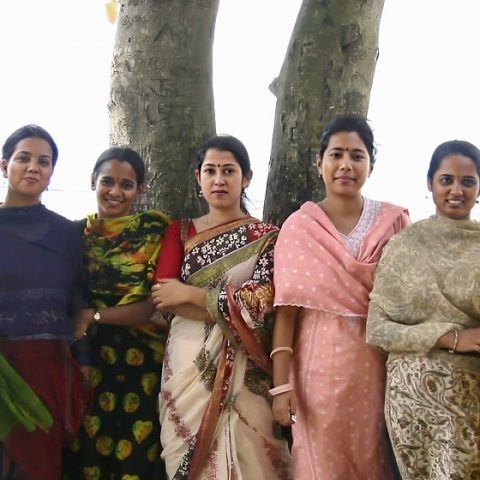Through a series of economic reforms in the 1980s, Bangladesh successfully established an export-oriented ready-made garment (RMG) industry which has made significant contributions of the country’s economic growth.
This sector earns 82 per cent of total export income, contributing 18 per cent to the country’s GDP. The rapid growth of the industry has placed Bangladesh as the world’s second largest apparel exporter, after China. Such a boom in economic growth is not without its pitfalls.

Photo: Susannah Savage / icddr,b
In 2012, a fire at the Tazreen Fashion factory killed over a 110 people and injuring over 200 workers in what has been deemed as the deadliest factory fire in the country’s history. Less than six months later, in April 2013, the eight-storey Rana Plaza building, which housed several garment factories collapsed, claiming over 1,100 lives and leaving 2,400 people injured.
The country has faced just criticism for its failure to provide basic amenities to its factory workers, who often suffer from a lack of nutrition and health services. Following the Rana Plaza incident, the RMG sector has undergone a massive change in terms of safety and compliance due in part to tremendous pressure from international buyers and importers. The Bangladesh Garment Manufacturers and Exporters Association (BGMEA) has completed building, fire and electrical safety inspections in over 3,700 factories, which are now making considerable investments in safety upgrades.
While the BGMEA’s initiatives should be lauded, the RMG industry should now turn to focus on the health and well-being of their workers, especially the women. Nearly four million people are employed in this sector, with women comprising 50-60 per cent of the workers. Much has been written about the exploitation of workers in the garment industry, but numerous studies conducted at icddr,b explored the adverse health effects this has had on the women who work in these settings.
The negative impact of factory work on women’s overall health has been documented in a recent study by icddr,b. Most of the study participants were married women with children and who had little formal schooling. They migrated to the city from rural, poverty-stricken parts of Bangladesh to financially support their families. These women are required to work at least 10-12 hours and will oftentimes work overtime to meet the daily production quota of 100 shirts per hour.
Although the research was conducted in two different factories, the issues faced by the women were strikingly similar, with the workers reporting their inability to share their problems with their predominantly male supervisors (this relates to menstrual and pregnancy-related complications). Moreover, they are expected to endure the physical illnesses which result from such laborious tasks, including heat exhaustion, constant back pain, headaches, fatigue, and many other complaints. Given the patriarchal society which governs Bangladesh, these women then tend to go home and cook and perform household chores for their husbands and families at the end of the work day.
Each factory operates their own clinic, employing both doctors and nurses from whom the workers can receive limited health services. The medical staff are not always available, and will mostly prescribe painkillers as a short-term means to alleviate the physical pain. They also advise the women not to continue factory work beyond ten years as it can become detrimental to their health. Despite all the risks involved with this line of work, the women reported they would prefer factory work over domestic work as the former gives them a better social standing and provides more financial gains.
These women bear the physical and psychological brunt of continuous labour work primarily because of their families. The money from their income will often be used to pay for food, house rent, and their children’s education. Many studies have shown evidence that female economic empowerment has significantly contributed to reducing poverty and increasing their family’s economic position.
Women in the garments factories are making contributions everyday to spearhead Bangladesh’s global financial and economic achievements. The country and its institutions need to recognise and address the health and safety issues plagued by these women in the workplace; stronger initiatives need to be taken to introduce policies and regulations which protect and promotes health rights for workers in this industry.

